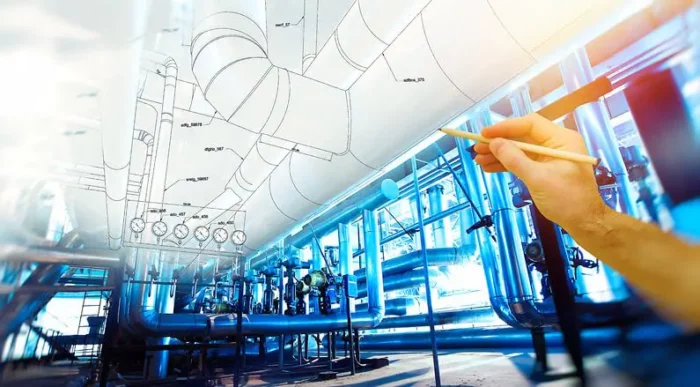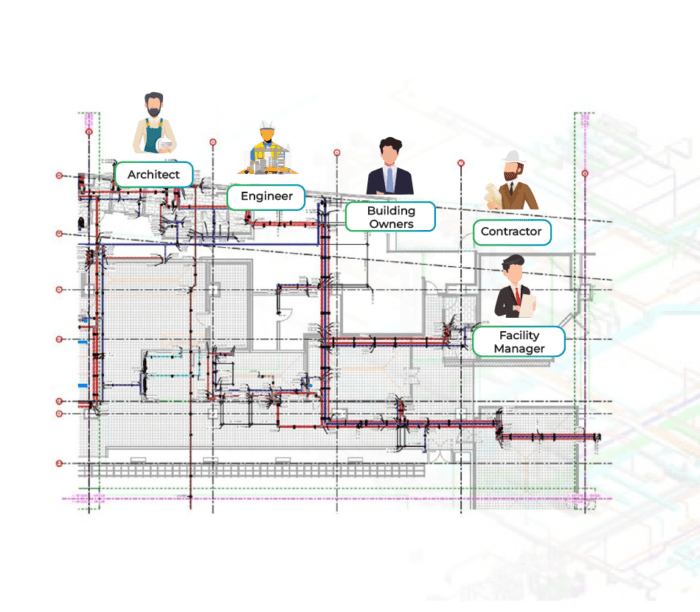Top 6 Key Benefits of MEP Shop Drawings for Building Contractors

The AEC sector is an extremely competitive market with technological advancement at its peak. Situations like budget overruns, delays, and quality compromises can cripple project return on investment and efficiency. MEP contractors use MEP shop drawings to ensure the fabrication and installation of components that align with the design intent. The detailing and cross-functional visualization of 3D BIM models allow onsite teams to execute the proposed design as it is and enable clash-free fabrication.
MEP shop drawings enable ease of coordination for fabrications and installations in a project. The component level detailing provided by MEP shop drawings for turning, bending, welding, and assembling facilitates safe and accurate fabrication. On-time completion of projects and cost control are ensured through minimal iterations using shop drawings.
What are MEP shop drawings?
MEP shop drawings are detailed drawings developed by the combination of architectural, structural, and civil shop drawings of a project. These drawings are created using CAD software, facilitating fabrication, manufacturing, and installation of the MEP systems in a building. Various project stakeholders including architects, engineers, and contractors use shop drawings for the design and installation of these systems.

The shop drawing services experts evaluate the building design carefully and generate a set of MEP shop drawings unique to the built form. The drawings present a clear picture of project specifications, money, and labor costs, helping in identifying potential errors, and thus saving time before construction begins.
Benefits of MEP Shop Drawing Services
MEP shop drawing services are revolutionizing the construction industry with their way of generating drawings and how they collaborate with other professionals. A few of the many benefits it has are:
Enhanced component installation
Accuracy and detail-infused MEP drawings assist contractors with the precise installation of MEP systems. MEP shop drawings have every component detailed, annotated, and tagged for representation and final assembly, simplifying visualization for MEP contractors from every possible angle.
A chaos-free installation is backed by a detailed guide for the contractors including step-by-step directions, a material list, specifications, and much more. Contractors capitalize on these features to minimize onsite installation time and lower project costs resulting in an improved overall ROI.
Improved Design Intent and Visualization
Design intent is a significant detail that should be acknowledged in the early design stage or pre-construction stage. Coordinated and accurate MEP shop drawings to detect design discrepancies before onsite construction work began.
An error-free design leveraging dimensional accuracy is transformed into better visualized 3D BIM models. Visualizing an MEP layout and components complying with building codes and standards enables the engineers to gain control over the project.
Ease of Training and accessibility
With the advancement of technology, communication has become seamless, promoting a collaborative work environment. MEP shop drawings provide a common platform for designers, fabricators, and contractors to interact and discuss.
They can make any required amendments that are executed in all sets of drawings instantly, making it easier for the team to communicate and work together harmoniously. Such accessible setups are also beneficial during hands-on training sessions for new team members or interns.
Efficient Budget Planning
Effective and efficient cost planning pertains to an accurate accounting of MEP components carried out for large-scale or complex projects. MEP shop drawings precisely entail the material and component costing for fabrication and installation purposes.
Another way to optimize costs is to prevent on-site material wastage while installation of MEP systems. Efficient budget planning is crucial for a project and is supported by accurate scheduling of MEP components.
The workflow clashes can be eliminated by getting logistics to comply with building schedules, for a transparent installation process.
Standardized elements in MEP libraries
An extensive data set of MEP libraries used for modeling and 2D shop drawings provides better accuracy reinforced with project specifications to the project. There are different Revit families available, system and loadable providing technically accurate and dimensionally verifiable components.
These components are scalable, flexible, and coordinated with the project drawing. Customized families simulate real-world operations, ensuring quality-driven and less time-consuming results.
Building contractors can effectively collaborate with fabricators using technical datasheets, and industry standards like COBie, model type, and others.
Promote collaboration and coordination
3D BIM models are a combination of various trades integrated into a single space. A well-coordinated BIM model can assist stakeholders with construction and design documentation.
A seamless collaboration among the stakeholders ensures an accurate and high-quality deliverable that eases the onsite construction process.
Common challenges for MEP shop drawings faced by Building contractors
Despite the several benefits MEP shop drawings have to offer, there are certain challenges faced by building contractors. Here are some of the challenges:
Lack of coordination and communication between stakeholders
The lack of communication between the stakeholders involved in the project during the preparation of shop drawings is a common challenge faced by the building contractors. When there are no clear communication channels developed between subcontractors the drawings and intent are not conveyed to the construction team. The negligence towards sharing information promptly by all involved parties also results in unsatisfactory conversation.
The lack of coordination and discourse leads to a mismatch between the drawings of different subcontractors. To avoid this issue, it is crucial to develop a clear communication network at the beginning of the project with everyone involved with the project on board.
Inadequate knowledge of BIM software and project management
Another challenge with MEP shop drawings is the inadequate knowledge of subcontractors with BIM Services and software and project management used to manage the projects. The result can be a lack of coordination between disciplines that can lead to errors in the shop drawings. The involved parties need to have a deep understanding and adequate training for project management to eliminate such issues.
Conclusion
In a rapidly evolving construction landscape leaning towards producing cost-effective, timely, and error-free work, MEP shop drawings serve as an efficient tool for building contractors. The drawings are a crucial part of the building construction process providing accurate and detailed information about the fabrication and installation of MEP systems.
These drawings ensure that systems are designed and installed properly, efficiently, and in compliance with codes and standards. A sound system that works in sync with the structure facilitates strong and sustainable building construction.




